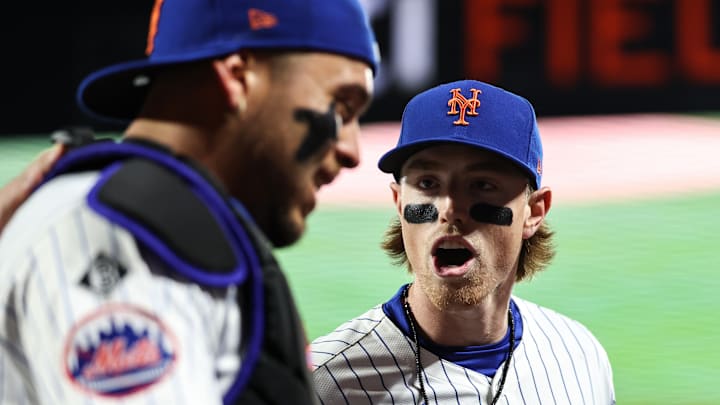The New York Mets, currently holding second place in the National League East, have navigated the 2025 season with a mix of promising stretches and frustrating inconsistencies. While much of the public discourse and fan attention naturally gravitates towards the formidable star power at the top of their batting order, a more insidious problem has quietly deteriorated.
This overlooked vulnerability is subtly but significantly undermining the team's offensive potential and, by extension, their aspirations for a deep postseason run. That silent struggle manifests itself most acutely in the seventh spot of the batting order.
The poor performance of the 7th spot lineup hole
Often considered a transition point, linking the heart of the order to the bottom and setting up opportunities for the top of the lineup to cycle back with runners on base, the Mets' 7th spot has, alarmingly, been the least productive spot in the Mets lineup this season. The Mets have the second-worst offense in the 7th spot in MLB in terms of wRC+, about 35% below the league average.
The Mets' offense has a major weakness in the seventh spot of their lineup. They have the worst batting average and slugging percentage in all of Major League Baseball from this position. Their hitters in this spot also frequently swing and miss, placing them among the top eight teams in strikeout percentage.
This lack of production at a key point in the order severely hinders the Mets' ability to build sustained offensive momentum. Before the arrival of Cedric Mullins, the team tried a number of different players in the seventh spot, with Francisco Alvarez, Ronny Mauricio, and Jeff McNeil getting the most playing time. Mark Vientos and Brett Baty also saw occasional action there.
There is a significant gap in production between the top of the Mets' lineup and the bottom. The team's top four hitters are, on average, about 30% better than the league average in terms of wRC+. However, the rest of the lineup collectively performs about 15% worse than the league average, demonstrating a long tail of weaknesses and production comparable to replacement-level players. This top-heavy offensive concentration leaves the rest of the team vulnerable.
This glaring disparity in offensive production, with the top of the lineup carrying a massive burden while the seventh spot acts as an anchor, is a critical issue for the Mets' postseason hopes. To truly contend for a championship, the Mets must find a way to create a more balanced attack.
